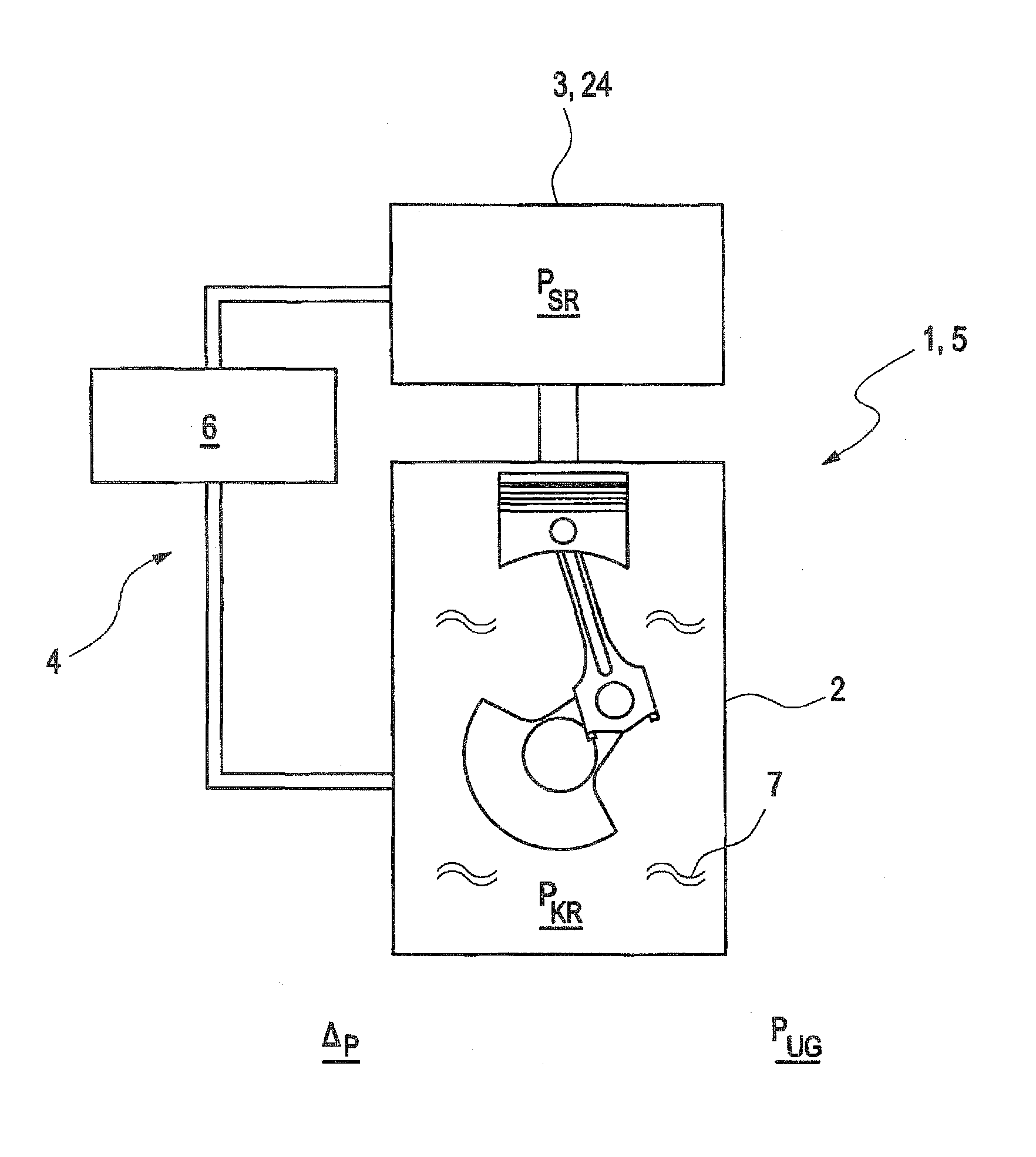Method for operating an internal combustion engine
a technology of internal combustion engine and oil consumption, which is applied in the direction of combustion engine, crankcase ventillation, machine/engine, etc., can solve the problems of significant additional cost, significant increase in oil consumption, and high lubricant consumption of internal combustion engine in operating phases with low absolute, so as to reduce the pressure in the crankcase and reduce the lubricant consumption. , the effect of reducing the lubricant consumption
- Summary
- Abstract
- Description
- Claims
- Application Information
AI Technical Summary
Benefits of technology
Problems solved by technology
Method used
Image
Examples
Embodiment Construction
[0015]FIG. 1 shows schematically an internal combustion engine 1 with a crankcase 2 and an intake manifold 3 forming an intake system 24, through which combustion air is supplied to the internal combustion engine 1. The crankcase 2 and the intake manifold 3 are connected with each other by a crankcase vent 4. In the illustrated embodiment, the internal combustion engine 1 is constructed as a naturally-aspirated wet sump engine 5. The crankcase vent 4 includes a pressure control valve 6 which allows adjustment of the vacuum pressure PKR in the crankcase 2 by applying to the crankcase 2 an intake manifold vacuum PSR, which can be adjusted with the pressure control valve 6 in the intake manifold 3, thereby evacuating lubricant vapors 7 residing in the crankcase 2. The pressure control valve 6 is hereby configured such that a differential pressure Δp between the crankcase vacuum PKR and the ambient pressure PUG can be adjusted to be between 100 mbar in 300 mbar. The crankcase therefore ...
PUM
 Login to View More
Login to View More Abstract
Description
Claims
Application Information
 Login to View More
Login to View More - R&D
- Intellectual Property
- Life Sciences
- Materials
- Tech Scout
- Unparalleled Data Quality
- Higher Quality Content
- 60% Fewer Hallucinations
Browse by: Latest US Patents, China's latest patents, Technical Efficacy Thesaurus, Application Domain, Technology Topic, Popular Technical Reports.
© 2025 PatSnap. All rights reserved.Legal|Privacy policy|Modern Slavery Act Transparency Statement|Sitemap|About US| Contact US: help@patsnap.com



